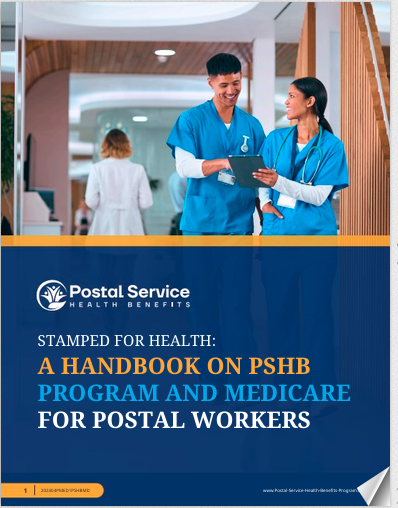Key Takeaways
-
When you’re enrolled in both Medicare and a Postal Service Health Benefits (PSHB) plan, the two programs work together to share your healthcare costs—but the order they pay in makes a difference.
-
Medicare Part B enrollment is required for many PSHB retirees starting in 2025, and not enrolling could leave you paying more out of pocket.
How Medicare and PSHB Work Together in 2025
As a current or retired USPS employee, your health coverage is shifting in 2025. The Postal Service Health Benefits (PSHB) program is replacing fehb for postal workers and retirees. If you’re eligible for Medicare, you’re also expected to enroll in Medicare Part B—unless you’re exempt.
Here’s the thing: PSHB doesn’t replace Medicare. Instead, the two coordinate benefits. That means they share the costs of your care based on rules about which one pays first. If you’re navigating this for the first time, don’t worry. It’s a lot, but we’ll break it down.
What Happens When You’re Enrolled in Both
If you have both Medicare and a PSHB plan, they split the cost of covered services based on a coordination of benefits process. In most cases:
-
Medicare pays first (primary payer) if you’re retired and over 65.
-
PSHB pays second (secondary payer) and picks up costs Medicare doesn’t fully cover.
This combo can help lower your out-of-pocket costs—if you’re enrolled correctly.
Timing Matters
Starting January 1, 2025, most USPS retirees and family members who are eligible for Medicare must be enrolled in Medicare Part B to keep PSHB coverage. You’re exempt if:
-
You retired on or before January 1, 2025, and aren’t enrolled in Part B.
-
You are an active employee age 64 or older as of January 1, 2025.
Everyone else needs to sign up during their Initial Enrollment Period (IEP) around their 65th birthday—or during a Special Enrollment Period (SEP) if eligible.
What Medicare Covers and What PSHB Picks Up
Understanding who pays for what helps you know what to expect from your medical bills. Here’s a general breakdown:
Medicare (Primary)
-
Doctor visits (Part B)
-
Hospital stays (Part A)
-
Lab work, x-rays, preventive care
-
Durable medical equipment
PSHB (Secondary)
-
Cost sharing left over after Medicare pays
-
Deductibles, coinsurance, and copays not fully covered by Medicare
-
Extra benefits Medicare doesn’t cover (varies by plan)
You’ll likely see a major reduction in your out-of-pocket costs compared to having just one form of coverage.
Why Part B Matters More Than Ever in 2025
Let’s be clear: Part B isn’t optional anymore for most Medicare-eligible USPS retirees. If you skip it and you’re required to enroll, your PSHB coverage might not pay as much—or anything—for services Medicare would’ve covered. That means:
-
You could end up footing the entire bill for services Medicare would’ve paid for first.
-
Your PSHB plan might deny claims that assume Medicare was primary.
-
You may face late enrollment penalties if you delay signing up for Part B.
So, even though there’s a monthly premium for Part B, it often saves you money in the long run.
What If You’re Still Working at USPS?
If you’re actively working and eligible for Medicare, PSHB remains your primary coverage, and Medicare becomes secondary. You can delay Part B enrollment without penalty—as long as you enroll promptly once you retire.
But once you stop working or switch to annuitant status, the roles flip: Medicare becomes primary, and PSHB becomes secondary.
Just remember to update your enrollment status to avoid billing issues.
Coordinating Prescription Drug Coverage
Starting in 2025, Medicare-eligible PSHB enrollees will automatically get prescription coverage through a Medicare Part D Employer Group Waiver Plan (EGWP). Here’s what to know:
-
You don’t need to enroll in a separate Part D plan.
-
The EGWP is managed through your PSHB plan.
-
The new $2,000 annual cap on out-of-pocket drug costs applies if you’re in this program.
This setup gives you the prescription benefits of Medicare Part D, without needing to manage a third separate plan.
What You Can Expect in Terms of Costs
No plan pays for everything, but with both Medicare and PSHB, your costs are generally lower. Here’s a simplified breakdown:
-
Deductibles: Medicare covers some, and PSHB may cover part or all of what’s left.
-
Copays and Coinsurance: Medicare usually covers 80% of outpatient services; PSHB can cover the remaining 20%.
-
Premiums: You’ll still owe a monthly premium for Part B and your PSHB plan.
Some PSHB plans may even offer Medicare Part B premium reimbursements, but this varies.
Making Sure You’re Properly Enrolled
Getting the coordination of benefits right is key. Here’s what you can do to stay on track:
-
Check your Medicare enrollment status before you retire.
-
Notify your PSHB plan once you enroll in Medicare.
-
Keep all identification cards (Medicare and PSHB) handy for medical visits.
Mismatches in coverage status can lead to claim denials and billing confusion. Don’t assume the systems talk to each other automatically.
Special Considerations for Family Members
If your spouse or other eligible family member is also covered under your PSHB plan, they too must enroll in Medicare Part B once eligible—unless they meet one of the exemption criteria. Otherwise, their coverage might also be reduced.
So, this isn’t just a solo mission. Your whole household might need to review Medicare timelines.
Key Timelines to Remember
Here are the dates and periods that matter most in 2025:
-
Initial Enrollment Period: 3 months before, the month of, and 3 months after your 65th birthday.
-
Special Enrollment Period: Up to 8 months after active USPS employment ends.
-
Open Season for PSHB: Happens every year from November to December—that’s when you can review and make changes to your PSHB plan.
Keep those windows in mind to avoid unnecessary penalties or gaps in coverage.
Questions to Ask Before Making Any Changes
Before you switch anything around, ask yourself (or a licensed agent):
-
Am I required to enroll in Medicare Part B based on my retirement date?
-
How does my current PSHB plan coordinate with Medicare?
-
Will I be automatically enrolled in the Medicare drug coverage?
-
What are my expected monthly premiums after coordinating both?
-
Are there any reimbursement programs I qualify for?
Making the Most of Dual Coverage in 2025
The main perk of having both Medicare and PSHB is peace of mind. Together, they cover a broader range of services and reduce what you’d otherwise pay. But that only works if:
-
You enroll in Medicare at the right time.
-
You keep your PSHB enrollment up to date.
-
You understand who pays first.
The combination gives you a cushion. With hospital stays, outpatient services, and prescriptions all accounted for, you’re less likely to face big surprise bills—as long as everything’s lined up properly.
Ready to Sort Out Your Coverage?
Coordinating Medicare with your PSHB plan might sound complex, but it can lead to much smoother healthcare experiences—and often lower costs. The most important thing is to understand when Medicare becomes your primary coverage and how that affects the way your PSHB benefits kick in.
If you’re nearing retirement or already retired, make sure you’ve checked your eligibility and enrollment status. That one step can save you a lot of stress down the line.
For help understanding your options, timelines, and how to get the most from your benefits, reach out to a licensed agent listed on this website for professional advice.






